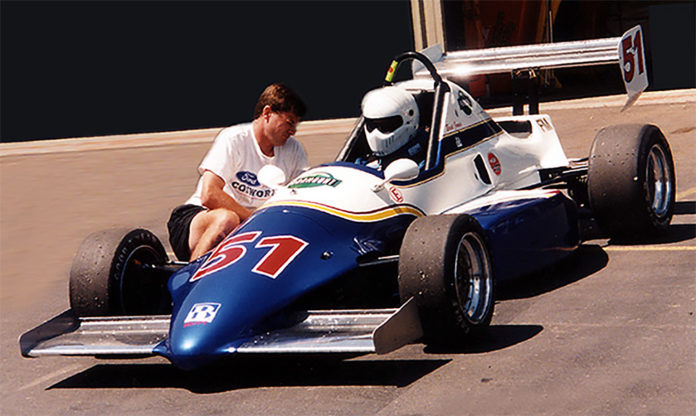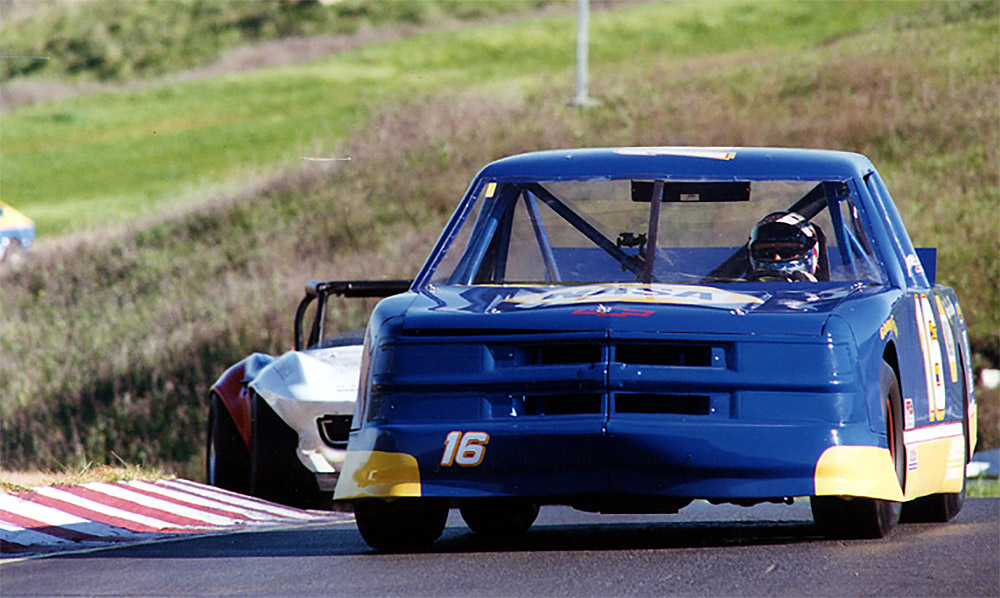Formula Mazda
The series originally grew out of a group of chassis built by Hayashi in Japan for the Jim Russell Racing Drivers School in California, USA. These cars were completed by Russell mechanics in the paddock of the 1984 Long Beach Grand Prix, where the cars made their US debut. The cars have a basic welded steel tube frame chassis, with in-board front shocks operated by upper rocker arms. A 180 hp carbureted Mazda rotary engine drives through a 5 speed H-pattern (H-gate) Hewland Mk 9 transaxle. Rear suspension is by two trailing links, an upper link and a lower a-arm. In the interest of creating close racing and limiting cost, the rules state that no modification is allowed until the rules expressly permit it-at one time even replacing the mirrors on the car was prohibited. The engines cannot be modified, and they are sealed to make it easy to detect cheating. The cars all use the same tires, springs, dampers, and adjustable anti-roll bars.
Ferrari 308GT
The Ferrari 308 was not intended for racing, but like so many past road-going Ferraris, it soon found itself at the track. Michelotto of Padova, Ferrari’s ‘unofficial’ race shop, built 11 examples of the Ferrari 308 for use in Group 4 competition. During the 1980s, these 11 cars earned many impressive victories and trophies for their owners. In the United States, an even more extreme version of the 308 was fabricated for the International Motor Sports Association’s ‘GTU’ Class by the Huffaker Engineering Company.
Panoz Esperante GTS
The Panoz GTS is built as a driver’s class spec car, to SCCA standards, with harness, roll cage, side bars, etc. Additionally, it is ~ 600 lb (270 kg) lighter than the base Esperante, has a steel 5.8 liter V8 racing engine that produces 385 bhp (287 kW; 390 PS), and is made of easily replaceable panels to facilitate small impact race repair. It can do 0-60 mph in 4.2 seconds, go up to a top speed of 182 mph (293 km/h), and achieve 0.98 g of lateral grip.






















